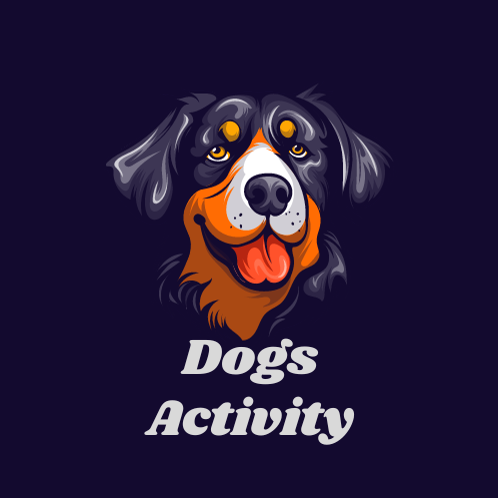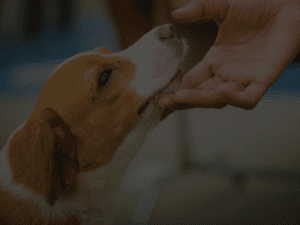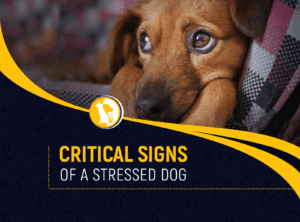
Your dog is a beloved member of your family, and when you notice that they are suddenly shaking and behaving oddly, it can be a cause for concern. As a responsible pet owner, it’s essential to understand the potential reasons behind these unusual behaviors and take appropriate action. In this comprehensive guide, we will explore the various factors that can cause your dog to shake and act strangely, helping you identify the root of the issue and determine the best course of action to ensure your dog’s well-being.
Chapter 1: Recognizing the Symptoms
When your dog is acting strange and shaking, it’s crucial to first understand the symptoms. These can vary depending on the underlying cause, but some common signs to look for include:
1.1. Shivering or Trembling
Shivering or trembling is a noticeable sign that something is amiss with your dog. This behavior can manifest as subtle quivering or more pronounced shaking.
1.2. Changes in Body Language
Your dog’s body language can tell you a lot about their emotional state. Look for signs of discomfort, such as lowered body posture, tucked tail, or a hunched back.
1.3. Restlessness
Restlessness, pacing, or an inability to find a comfortable position can be indicative of distress.
1.4. Whimpering or Whining
Vocalization, such as whimpering or whining, can be a way for your dog to communicate that they are in pain or discomfort.
1.5. Changes in Appetite
A sudden loss of appetite or refusal to eat is another sign of potential health issues.
1.6. Avoidance Behavior
Some dogs may become more reclusive or avoidant when they are not feeling well. They may shy away from social interactions or hide.
Chapter 2: Common Causes of Shaking and Strange Behavior
Understanding the potential causes of your dog’s sudden shaking and strange behavior is essential to determine the best course of action. While this guide does not replace professional veterinary advice, it can help you narrow down the possibilities:
2.1. Fear or Anxiety
Dogs can experience fear or anxiety due to various factors, including loud noises (thunderstorms, fireworks), unfamiliar environments, or separation from their owner. This can lead to trembling and unusual behavior.
2.2. Pain or Discomfort
Physical discomfort or pain, whether due to injury or an underlying medical condition, can cause your dog to shake and act abnormally. Conditions such as arthritis, dental issues, or even gastrointestinal problems may be the culprits.
2.3. Poison Ingestion
Ingesting toxic substances, such as certain foods, plants, or household chemicals, can lead to adverse reactions, including shaking and unusual behavior. If you suspect your dog has ingested something toxic, seek immediate veterinary assistance.
2.4. Illness or Infection
Various illnesses, infections, and diseases can result in sudden and strange behavior. Examples include parvovirus, distemper, urinary tract infections, and more.
2.5. Allergies
Allergies, whether to food or environmental factors like pollen or insect bites, can lead to itching, discomfort, and subsequent strange behavior in your dog.
2.6. Gastrointestinal Upset
Issues like indigestion, bloating, or gastritis can lead to abdominal discomfort, restlessness, and changes in behavior.
2.7. Neurological Disorders
Neurological problems, such as seizures or cognitive dysfunction, may manifest as shaking or unusual behavior.
2.8. Medication Side Effects
If your dog is on medication, some side effects can include shaking or altered behavior. Consult your veterinarian if you suspect this might be the case.
Chapter 3: Immediate Steps to Take
When your dog is suddenly shaking and behaving oddly, it’s essential to take immediate steps to ensure their well-being:
3.1. Assess the Situation
First, assess the immediate surroundings to identify any potential hazards or toxins that your dog might have encountered.
3.2. Keep Calm
Dogs can pick up on your emotions, so staying calm and composed is essential. Speak to your dog in a soothing tone to help reduce their anxiety.
3.3. Check for Injuries
Examine your dog for any visible injuries or signs of discomfort. Pay particular attention to their paws, limbs, mouth, and abdomen.
3.4. Contact Your Veterinarian
If you are unsure about the cause of your dog’s shaking and unusual behavior or if the symptoms are severe, contact your veterinarian immediately. They can provide guidance and determine if a visit is necessary.
3.5. Provide a Safe and Quiet Environment
Create a quiet and safe space for your dog to rest. Minimize exposure to stressors like loud noises or excessive activity.
3.6. Monitor Your Dog
Keep a close eye on your dog’s condition. Note any changes in their behavior, appetite, or physical state to provide accurate information to your veterinarian.
Chapter 4: When to Seek Emergency Care
Certain situations warrant immediate emergency care. If you observe the following signs, do not hesitate to seek veterinary assistance:
4.1. Severe Discomfort
If your dog appears to be in severe pain, is continuously whimpering, or displaying intense distress, it’s an emergency.
4.2. Inability to Breathe
If your dog is having difficulty breathing, it’s critical to act swiftly. This can be a life-threatening situation.
4.3. Unconsciousness
If your dog loses consciousness, it’s a dire situation that requires immediate veterinary attention.
4.4. Trauma
In cases of trauma, such as car accidents or severe falls, seek emergency care to assess potential injuries.
4.5. Ingestion of Toxins
If you suspect your dog has ingested a toxic substance, contact your veterinarian or an emergency pet poison hotline immediately.
Chapter 5: Next Steps and Diagnosis
Once you have contacted your veterinarian, they will provide guidance on the next steps, which may include a physical examination, diagnostic tests, or additional evaluations:
5.1. Physical Examination
Your veterinarian will conduct a thorough physical examination to assess your dog’s overall condition, including checking for pain, injury, or abnormalities.
5.2. Diagnostic Tests
Depending on the symptoms and the vet’s findings, diagnostic tests may be necessary. These can include blood tests, X-rays, ultrasounds, or other imaging studies.
5.3. Treatment
The treatment plan will depend on the underlying cause of your dog’s symptoms. It may involve medication, surgery, supportive care, or a combination of these.
5.4. Follow-Up Care
Follow any prescribed medications or care instructions diligently. Attend follow-up appointments to ensure your dog’s recovery is on track.
Chapter 6: Preventive Measures
Preventive measures can help reduce the risk of your dog experiencing sudden shaking and unusual behavior:
6.1. Dog-Proof Your Home
Remove potential hazards and toxins from your home to prevent accidental ingestion.
6.2. Keep Your Dog on a Leash
When outdoors, keep your dog on a leash to prevent them from encountering dangerous substances or running into hazardous situations.
6.3. Regular Veterinary Check-Ups
Schedule routine veterinary check-ups to catch and address health issues before they become severe.
6.4. Nutrition and Exercise
Maintain a balanced diet and ensure your dog receives adequate exercise to promote overall health and well-being.
6.5. Manage Stress and Anxiety
Help your dog cope with stress and anxiety through training, socialization, and creating a calm environment.
Chapter 7: Conclusion
When your dog is suddenly shaking and acting strangely, it’s a natural response to feel concerned. However, by understanding the potential causes, taking immediate steps to ensure their safety, and seeking professional veterinary care, you can help your furry friend on the path to recovery. Remember that early detection and intervention are crucial for your dog’s well-being, and as a responsible pet owner, your vigilance and love are invaluable in ensuring a happy and healthy life for your beloved canine companion.



